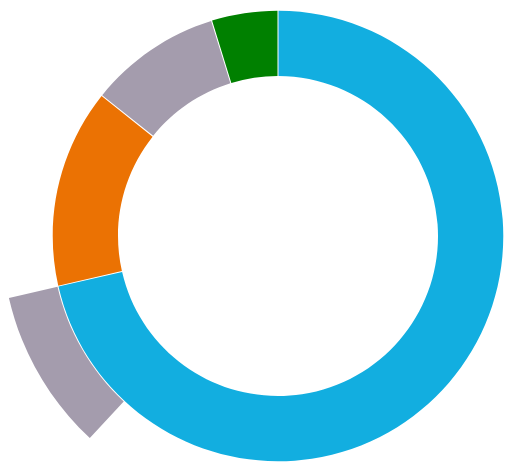The platform survey received responses from 21 institutional, national and continental platforms that host Diamond OA journals from nine countries: Algeria, Ethiopia, Ghana, Kenya, Nigeria, South Africa, Tunisia, Uganda and Zambia who contributed to the consultations. Most responses came from South Africa.
The survey responses came from continental platforms: African-wide portal for African Scholarship from African universities and AJOL – an African platform for all qualifying, African-published research journals; national platforms - aggregation portal on behalf of South African and African journals, SciELO South Africa and Khulisa Journals that hosts SciELO SA approved journals; institutional journals platforms and a commercial medical publisher that collaborates with scholarly societies and combines its own platform with journal hosting provided by Sabinet. Some individual journals also responded as disciplinary platforms, but these responses were eventually excluded from the analysis. Responses also show that institutional repositories play a role in Diamond OA publishing in Africa, e.g. in University of Zambia.
Table 17. The distribution of the platform survey responses by country
| Country | # responses |
|---|---|
| Ethiopia | 1 |
| Kenya | 1 |
| Nigeria | 1 |
| South Africa | 17 |
| Zambia | 1 |
| Total | 21 |
The majority of platforms (15 of 21) covered by the survey are institutional in scope, though some also serve as disciplinary and national platforms. Three continental platforms responded to the survey.1
| Platform scope | # platforms2 |
|---|---|
| Disciplinary | 1 |
| Institutional | 15 |
| National | 4 |
| Continental | 3 |
Figure 13. The scope of the surveyed platforms
Platforms differ in size measured by the number of hosted journals (ten platforms host one to five journals; seven - 21–30 journals, one – 100–200 journals, while one hosts more than 500 journals)3 and the number of published articles (seven have up to 1,000 articles, six – 1,000–5,000, two – 5,000–10,000, two – 10,000–50,000, and two - 100,000–500,000 articles)4. While nine platforms host only Diamond OA journals, others also host journals that charge author fees. Altogether, the surveyed platforms host 302 Diamond OA journals.
The largest continental platform and the project partner AJOL currently has 130 Diamond OA journals and there were 4,088 articles added to those journals in 2023 (out of the total number of articles of 17,454 added to the platform last year).
Disciplines
All platforms, except one, which is dedicated to medical sciences, cover multiple disciplines. One portal focuses on STEM only, while three are oriented solely towards SSH. All the other platforms cover a variety of disciplines, though SSH seems to be better represented.
Table 18. The disciplinary coverage of the surveyed platforms
| Disciplines | # of platforms |
|---|---|
| Multidisciplinary | 18 |
| Natural sciences | 7 |
| Engineering and technology | 6 |
| Medical and health sciences | 10 |
| Agricultural sciences | 5 |
| Social sciences | 11 |
| Humanities | 11 |
| Non-academic | 3 |
Inclusion criteria
Platforms have different inclusion criteria. It is noteworthy that none of them use bibliometric criteria.
Table 19. Inclusion criteria used by the surveyed platforms
| Inclusion criteria | # platforms |
|---|---|
| Institutional, national or disciplinary affiliation | 12 |
| Compliance with editorial quality criteria | 13 |
| Only OA journals are accepted | 3 |
| Only Diamond OA journals are accepted | 2 |
Other responses include:
- Compliance with current best practice, e.g. DOIs, ORCIDs, detailed affiliations of authors, etc.
- No
- Only African universities and institutes can publish on APOS.
- Only SciELO SA approved journals are considered for inclusion. All SciELO SA journals were subjected to peer-review evaluation.
- We have a rigorous and very comprehensive assessment process for applicant and ongoing journals.
1 Free-text data were coded and included in the table. The survey data were cross-checked and aligned with the information from the country report for South Africa.
2 The sum is greater than the total number of platforms because some belong to multiple types.
3 One response could not be verified.
4 Two responses could not be verified.

